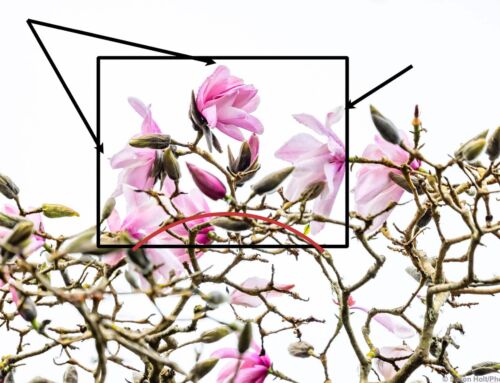The ginkgo leaves fell all at once. This is what they do when they decide to drop their leaves. Overnight a puddle of leaves lay under the trees around my driveway.
Before a wind kicked up, or before I drove down the driveway crushing the leaves – I grabbed my camera. I know a photo op when I see it .
But for any given photo op the photographer needs to decide what to say. The puddle of leaves is just the start. Deciding the physical point of view to place the camera is directly related to the story you want to tell – your editorial point of view.
If I want to emphasize the pool of leaves, I’ll compose the photo so that they seemingly go on forever.
Or, if I want to show more of a garden scene, the leaves scattered on my lavender hedge and how the flowering ‘Yuletide’ Camellia joins the party, I will move my camera ever so slightly to a different point of view.
Or, if I want to show the green and gold leaves mingled together I will move my camera right down to their level providing a different point of view and optical perspective from the ground.
Each photo has its own point of view. Double meaning intended.
****************************
Point of View is chapter 4 in the e-book Think Like a Camera and also available as its own mini e-book for $1.99 in the iTunes store or Google Play.
This photo is from the book – more leaves from a ground-level point of view. Inside tip: as I set this photo up, and looking through the viewfinder of the camera on the tripod, I scattered extra leaves to fill the scene.













Leave A Comment